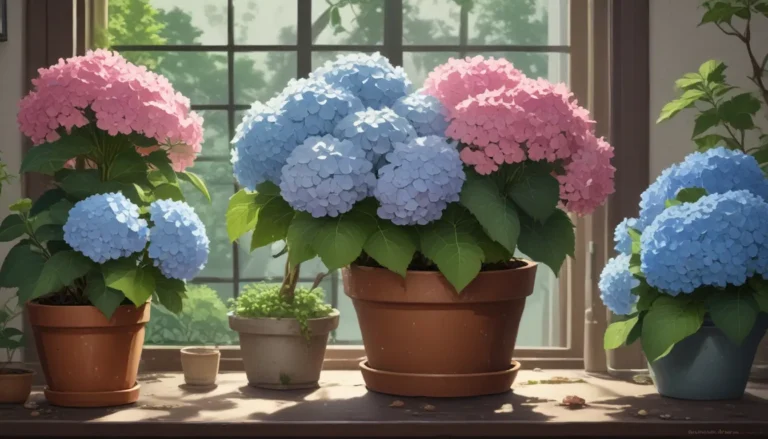How to Successfully Grow and Care for Kalanchoe

Succulent plants are often known for being low-maintenance and easy to care for, but when it comes to kalanchoe, they take it up a notch. Kalanchoe species are not only hardy and resilient but are also visually appealing with their beautiful flowers and unique foliage. With the ability to propagate new plants effortlessly either from seeds or cuttings, as well as some varieties reproducing viviparously, growing kalanchoe can be a rewarding experience.
An Introduction to Kalanchoe
Belonging to the stonecrop family, Kalanchoe plants are part of the Crassulaceae family with over 120 species. While some of these species are cultivated around the world, many are native to tropical parts of Africa, specifically Madagascar. These plants are well-suited for rock gardens, surviving in minimal water and drought conditions, making them excellent candidates for various landscape uses.
When it comes to their appearance, kalanchoe plants vary significantly. From flat circular leaves of the flapjacks variety to the fuzzy silvery leaves of the panda plant, each species offers unique visual characteristics. They also range in size from dwarf floral varieties to larger specimens that can grow up to 20 feet under ideal conditions.
Cultivation and History
Kalanchoe plants are typically grown as perennials in Zones 10 to 12, with some varieties suitable for Zone 9 as well. These plants thrive in well-draining soil and require bright, indirect light for optimal growth. While they are relatively low-maintenance, they do have specific requirements to ensure their overall health and longevity.
Pruning and Maintenance
Despite being low-maintenance, kalanchoe plants do require some care and attention. Regular watering when the soil has dried out, periodic removal of dead leaves and flowers, and repotting every year or two are essential tasks to keep these plants thriving. Additionally, being mindful of temperature requirements, especially during colder months, is crucial to prevent damage due to freezing temperatures.
Best Uses
Kalanchoe plants have versatile uses in both indoor and outdoor settings. From accent pieces in garden beds to ground cover options and container plants for indoor display, they offer a wide range of landscaping possibilities. With their tolerance for drought and poor soil conditions, these plants are ideal for xeriscaping and rock gardens. However, some species like mother of millions and mother of thousands are considered invasive in certain regions, so caution is advised when planting them.
Propagation and Growing Tips
One of the most appealing aspects of growing kalanchoe plants is their ease of propagation. Whether through stem cuttings, leaf cuttings, or plantlets produced by viviparous species, expanding your kalanchoe collection is simple and rewarding. When it comes to growing kalanchoe successfully, ensuring proper sunlight exposure, well-draining soil, and appropriate watering practices are essential. By following these tips and guidelines, you can enjoy thriving kalanchoe plants year-round.
Managing Pests and Disease
While kalanchoe plants are generally resistant to pests and diseases, there are a few common issues to watch out for. Mealybugs, scale insects, and spider mites are common insect pests that can affect these plants. Regular inspection, early detection, and targeted treatments can help prevent infestations and maintain the overall health of your kalanchoe plants. Additionally, being aware of diseases like powdery mildew and root rot can help you take proactive measures to minimize potential damage.
Species Selection and Varieties
With a wide variety of kalanchoe species available for cultivation, selecting the right ones for your garden or home can be an exciting endeavor. Popular varieties like florist’s kalanchoe, mother of thousands, and panda plant offer unique visual appeal and growth habits. By choosing the right species based on your climate, space availability, and aesthetic preferences, you can create a vibrant and diverse collection of kalanchoe plants in your indoor and outdoor spaces.
In conclusion, kalanchoe plants are a delightful addition to any garden or home environment. With their striking appearance, ease of care, and versatility in landscaping applications, these plants offer endless possibilities for plant enthusiasts of all levels. By following the tips, guidelines, and recommendations provided in this article, you can successfully grow and care for kalanchoe plants while enjoying their beauty and resilience year-round.





